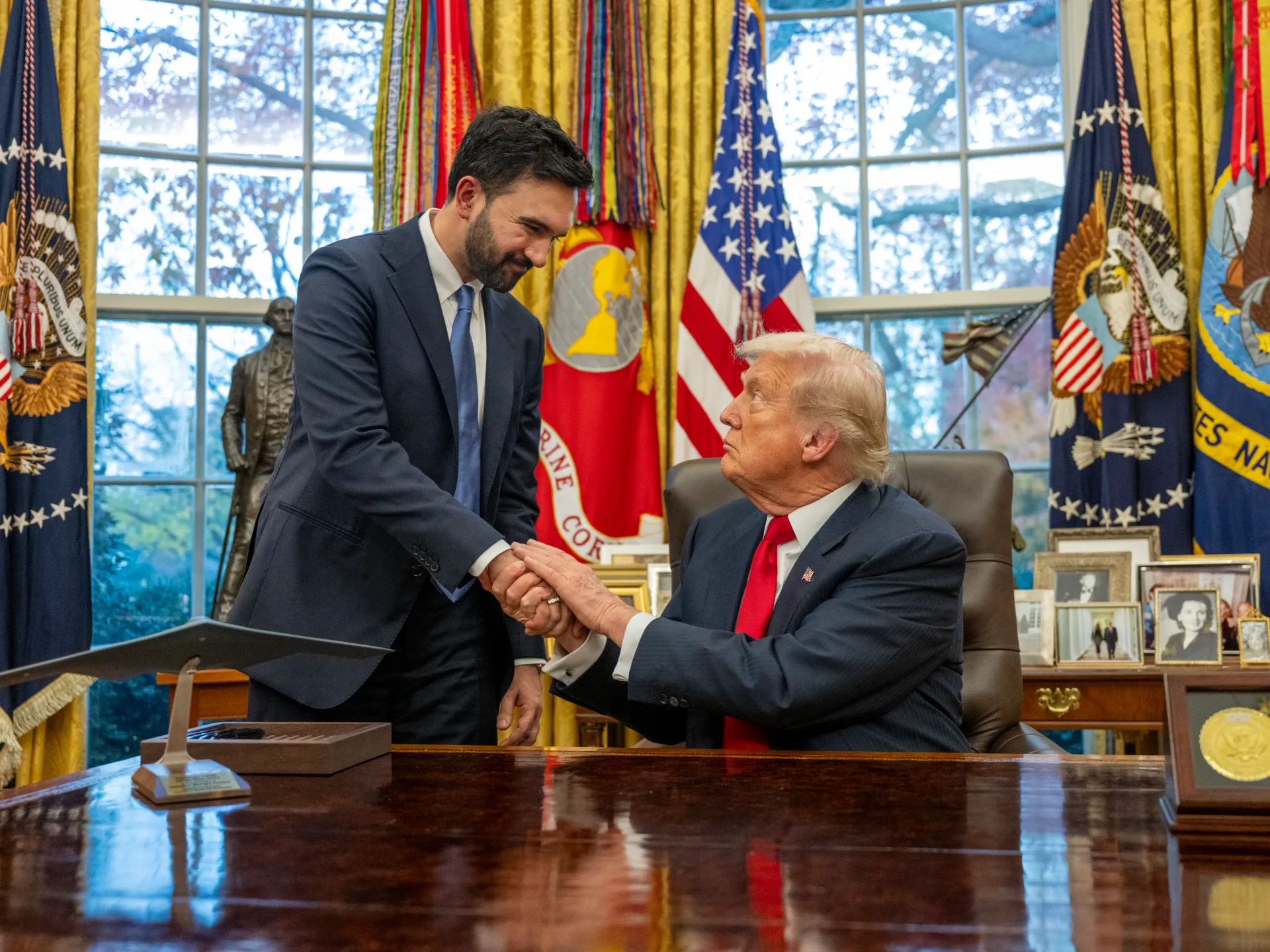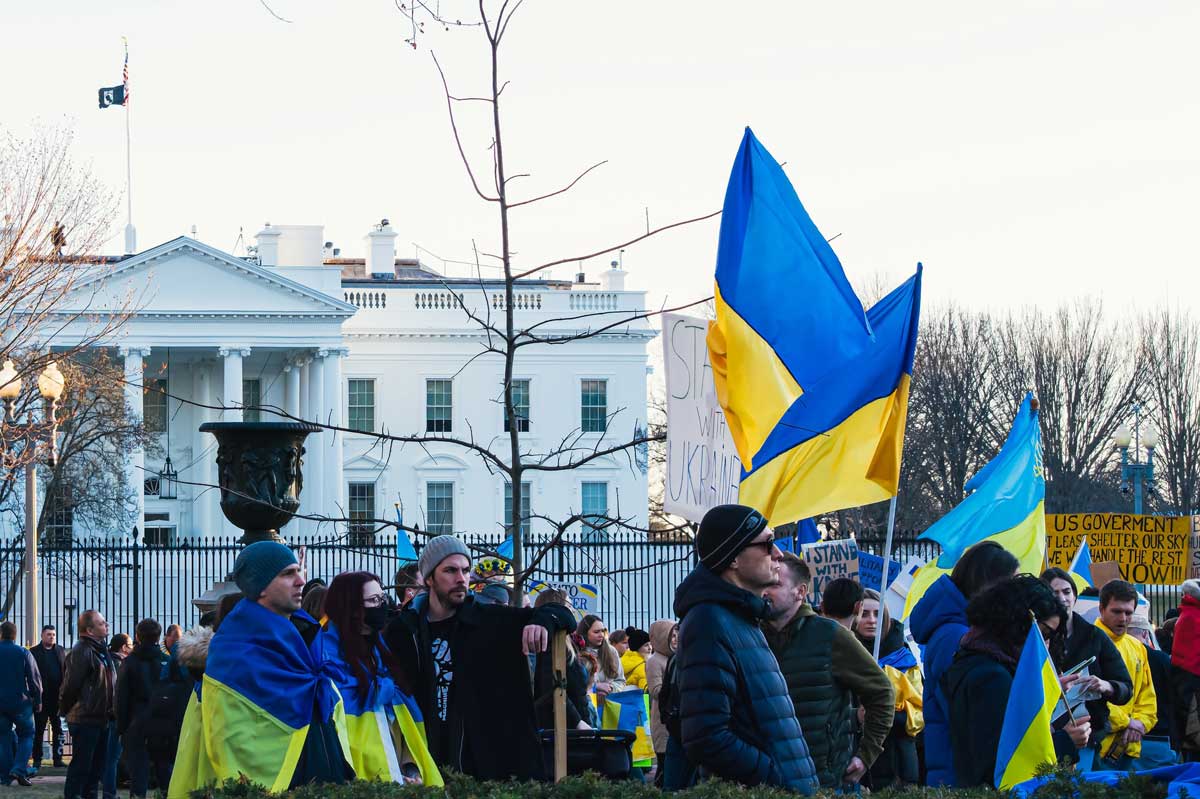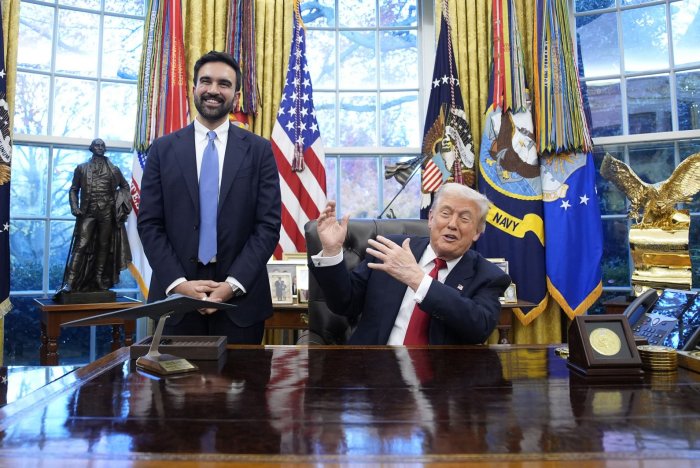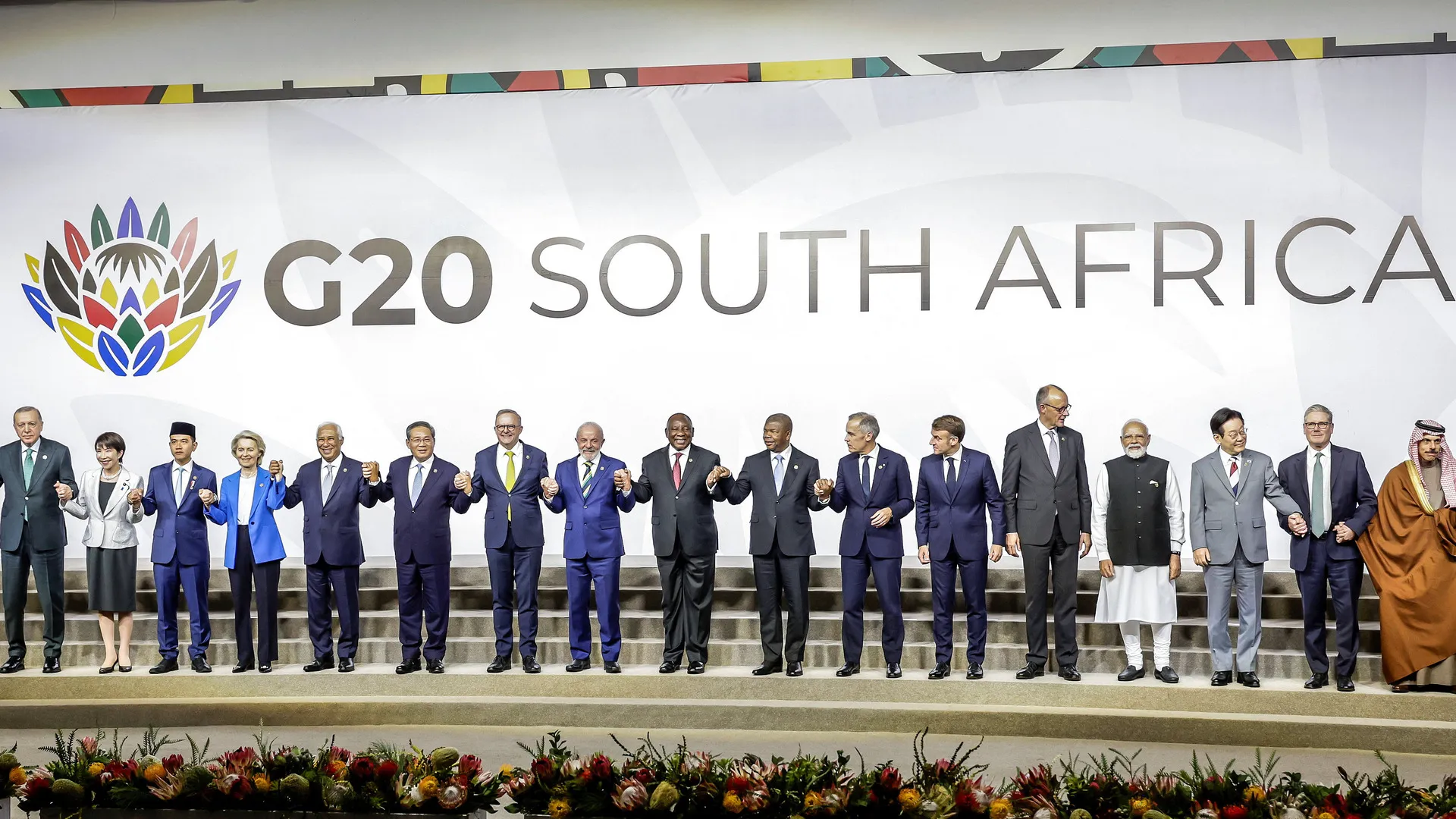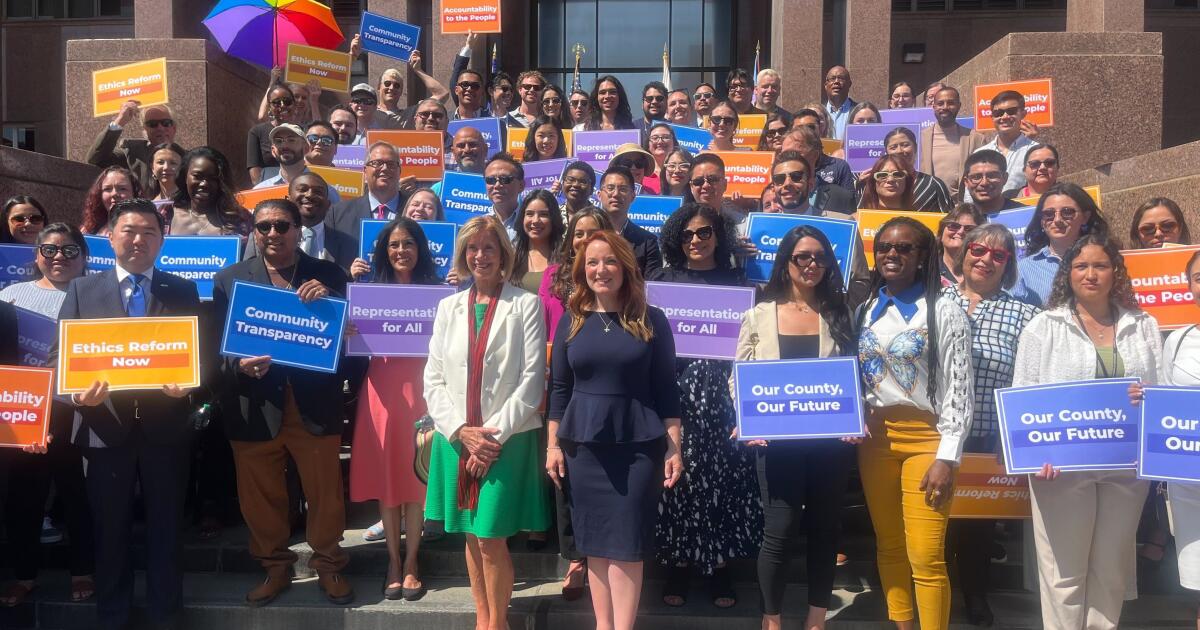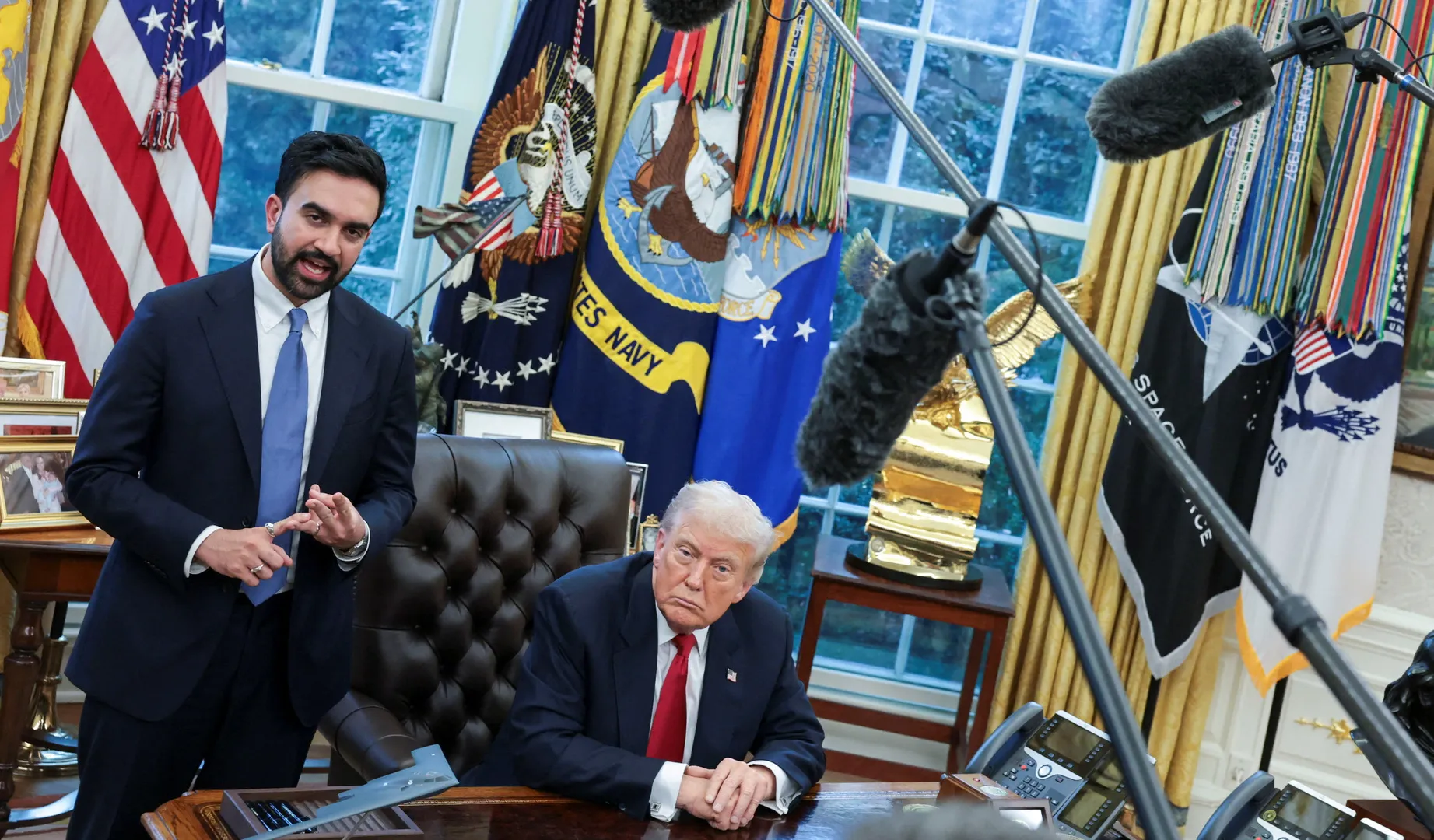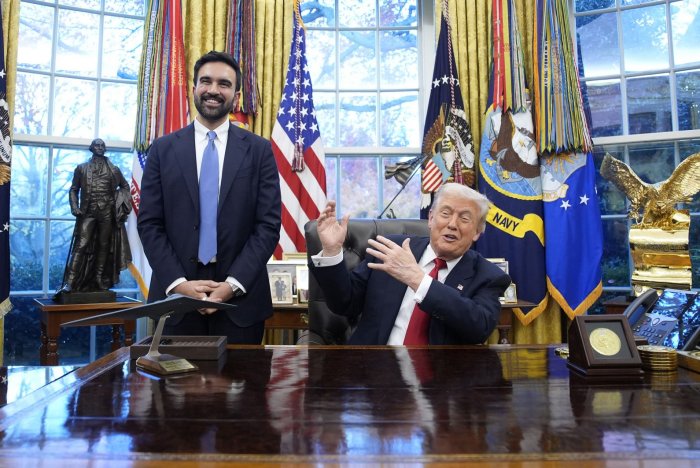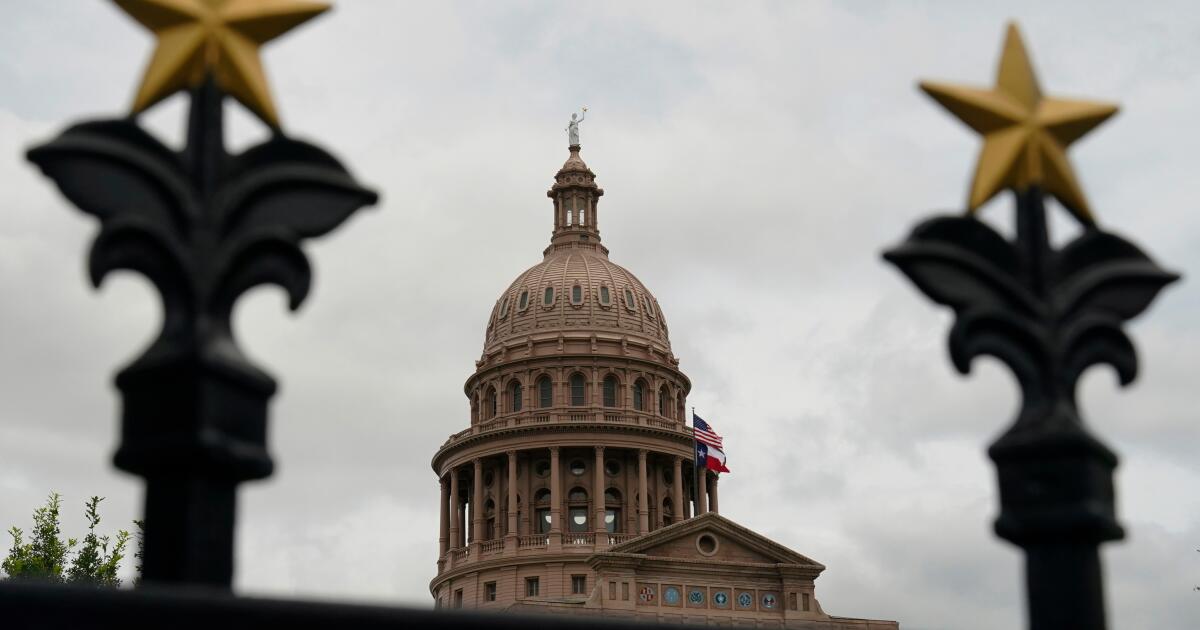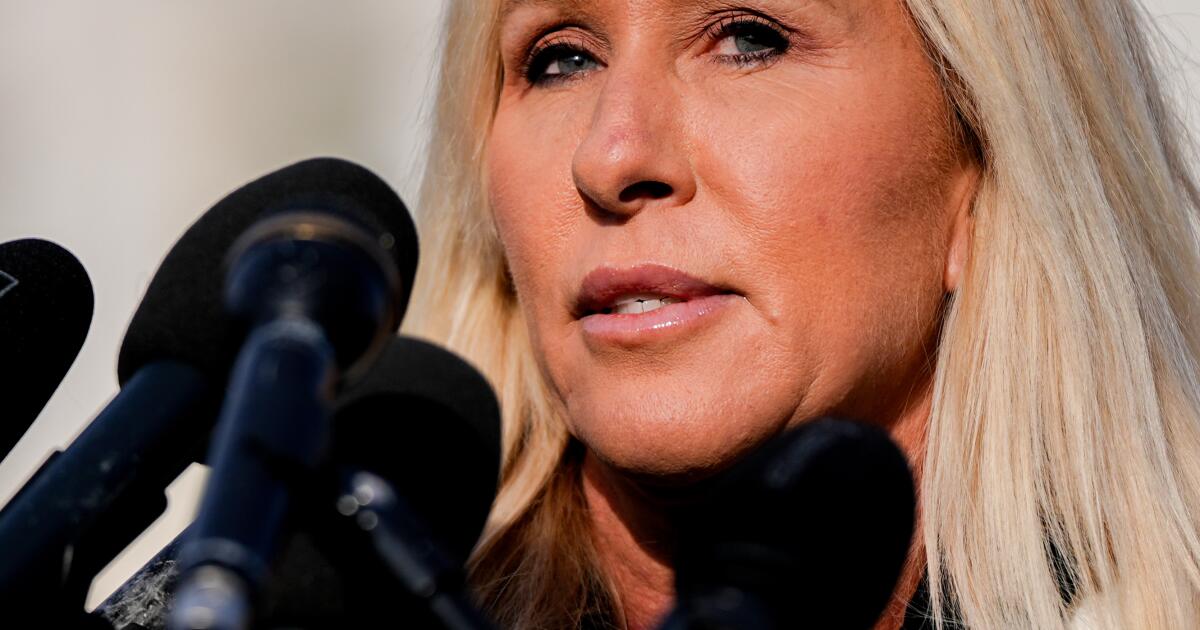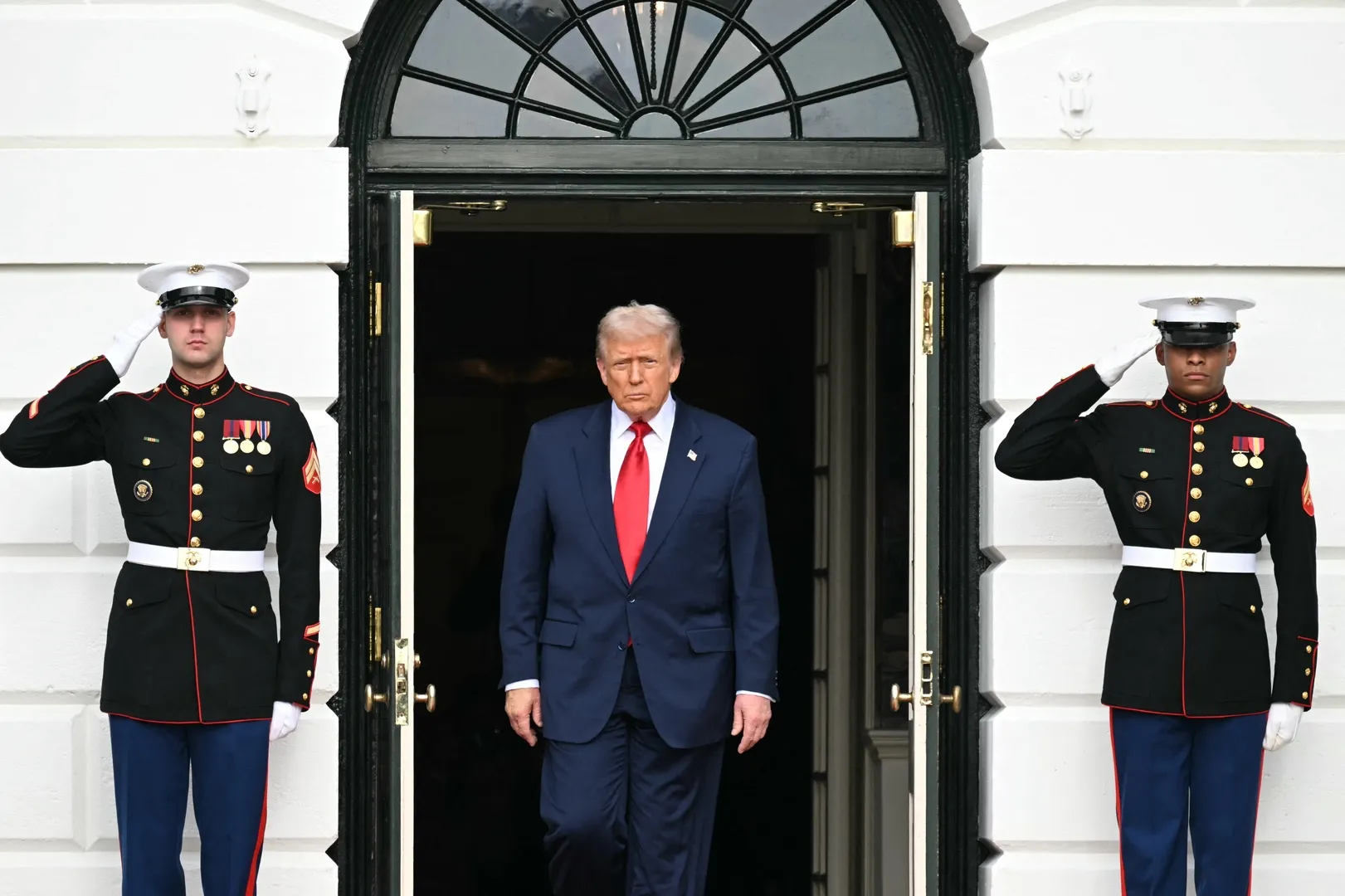Nov. 22 (UPI) — President Donald Trump on Saturday said his proposed peace plan to end the war raging between Ukraine and Russia since 2022 is not his final offer.
Trump has given Ukraine a deadline Thursday to accept the 28-point proposal.
When asked by reporters outside the White House whether it is the final offer, Trump responded, “No. We’d like to get to peace.”
“One way or another we’ll get it ended,” he said, adding his familiar refrain that “the Ukraine war with Russia should have never happened. If I were president, it never would have happened.”
Asked what would happen if Ukraine rejects the plan, Trump said Ukrainian President Volodymyr Zelensky “can continue to fight his little heart out.”
Trump spoke to reporters before playing golf with Jack Nicklaus at the Joint Base Andrews golf course.
The president sent officials to Geneva, Switzerland, to meet Sunday with a Ukrainian delegation, including Army Secretary Daniel Driscoll, Secretary of State Marco Rubio and special envoy Steve Witkoff, a top U.S. official told ABC News on Saturday.
National security advisers from Germany, France and Britain are also going to Geneva for talks, a diplomatic source told CNN Saturday.
Ukrainian President Volodymyr Zelensky on Saturday posted on X about the talks.
“In the coming days, consultations with our partners will take place on the steps needed to end the war,” he said in a video.
“Our representatives know how to defend Ukraine’s national interests and exactly what must be done to prevent Russia from launching a third invasion, another strike against Ukraine — just as it has repeatedly committed crimes against our people and against other nations in the past,” Zelensky said.
His office said Friday noted that “Ukraine never wanted this war and will make every effort to end it with a dignified peace.
“Ukraine will never be an obstacle for peace, and the representatives of the Ukrainian state will defend legitimate interests of the Ukrainian people and the foundations of European security,” they said. “We are grateful for our European partners’ willingness to help.”
There are planned meetings with a Russian delegation.
Russia worked with the United States on the peace plan, which was presented to Ukraine last week. Russian President Vladimir Putin said “it could form the basis of a final peace settlement.”
But the plan includes what Ukraine has said are nonstarters, including giving up land not yet occupied by Russia and cutting its armed forces by more than half.
Ukraine also would be forbidden from possessing long-range weapons and Moscow would retain virtually all the territory it has occupied — notably, its 2014 seizure of Crimea.
Additionally, Ukraine would not be permitted join NATO, which has been a demand by Russia.
“Since the first days of the war, we have taken one, extremely simple position: Ukraine needs peace,” Zelenskyy said in an address on Friday. “And a real peace — one that will not be broken by a third invasion.”
Driscoll met with Zelensky on Thursday about a “collaborative plan to achieve peace in Ukraine,” according to a U.S. official.
Allies: Additional work needed
U.S. allies have been skeptical of the plan, including those attending the G-20 summit in South Africa.
The U.S. is absent because of “human rights violations” in the nation, Trump said on Nov. 8.
Twelve European Union leaders, joined by the Canadian and Japanese prime ministers, released a joint statement saying it welcomed “continued U.S. efforts to bring peace to Ukraine. The initial draft of the 28-point plan includes important elements that will be essential for a just and lasting peace.”
Bur it noted the draft proposal “will require additional work. We are ready to engage in order to ensure that a future peace is sustainable. We are clear on the principle that borders must not be changed by force. We are also concerned by the proposed limitations on Ukraine’s armed forces, which would leave Ukraine vulnerable to future attack.”
And these leaders said they must sign off on portions of the agreement that affect them.
“We reiterate that the implementation of elements relating to the European Union and relating to NATO would need the consent of EU and NATO members respectively,” the statement said.
Zelensky, in successive posts on X to leaders, wrote “thank you for your support!”
In a statement ahead of the meeting, British Prime Minister Keir Starmer said he expected friends and partners of Ukraine to “meet in the margins of the G-20 summit to discuss how we can secure a full ceasefire and create the space for meaningful peace negotiations.”
“We will discuss the current proposal on the table, and in support of President Trump’s push for peace, look at how we can strengthen this plan for the next phase of negotiations,” Starmer added.
Republicans unhappy with plan
The plan was also criticized by U.S. Sen. Mitch McConnell, R-Ky., the former Republican majority leader, as a way to appease Putin.
“Putin has spent the entire year trying to play President Trump for a fool,” McConnell posted Friday on Facebook. “If Administration officials are more concerned with appeasing Putin than securing real peace, then the President ought to find new advisors.
“Rewarding Russian butchery would be disastrous to America’s interests. And a capitulation like Biden’s abandonment of Afghanistan would be catastrophic to a legacy of peace through strength,” he said.
South Carolina Sen. Lindsey Graham, a key Trump ally, called parts of the plan “problematic and can be made better” in a post on X.
“The goal of any peace deal is to end the war honorably and justly — and not create new conflict,” Graham said. “Finally, to the world: what about the fate of the almost 20,000 Ukrainian children kidnapped by Putin’s forces? This issue has to be addressed in any negotiated settlement.”
A bipartisan coalition of pro-Ukraine legislators will seek to force a House vote to impose crippling sanctions on Russia
Republican Rep. Brian Fitzpatrick of Pennsylvania said in an X post Friday that he and his allies have “officially notified both the Clerk of the House and House leadership of our discharge petition to force a vote on crushing Russian sanctions immediately upon our return” from the Thanksgiving holiday recess.
President Donald Trump meets with New York City mayor-elect Zohran Mamdani in the Oval Office at the White House in Washington, on Friday. Photo by Yuri Gripas/UPI |
License Photo
